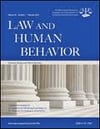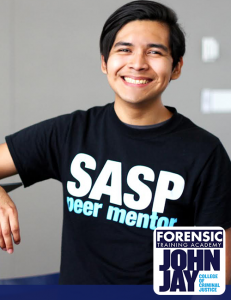
With respect to age-related differences in true and false guilty pleas, youthful status may be a risk factor for false guilty pleas. This is the bottom line of a recently published article in Law and Human Behavior. Below is a summary of the research and findings as well as a translation of this research into practice.

Featured Article | Law and Human Behavior | 2016, Vol. 40, No. 6, 611-615
To Plead or Not to Plead: A comparison of Juvenile and Adult True and False Plea Decisions
Authors
Allison D. Redlich, George Mason University
Reveka V. Shteynberg, University at Albany, State University of New York
Abstract
In a criminal justice system in which almost every adjudicated defendant, regardless of age, pleads guilty, it becomes important to understand the decision-making process underlying this choice. In the present research, we examined how age (juvenile vs. young adult), guilt versus innocence, and plea comprehension influenced the decision to plead guilty and the underlying plea rationale. We found that whereas age did not affect willingness to plead guilty when participants were asked to assume guilt in a hypothetical scenario, juveniles were more than twice as likely as young adults to plead guilty when asked to assume innocence. In addition, consistent with past research and developmental theory, juveniles were significantly less likely than adults to consider the short- and long-term consequences of the decision, and to understand and appreciate plea-related information. We also found that legal knowledge, after controlling for age, was positively (albeit weakly) related to plea decisions, but only for guilty participants. Implications for juveniles and adults involved in the criminal justice system, as well as wrongful convictions, are discussed.
Keywords
guilty pleas, defendant decision-making, juvenile and adult plea comprehension
Summary of the Research
“An examination of the wrongful conviction cases involving false (police-induced) confessions reveals that juveniles are at special risk (Kassin et al., 2010). For example, 33% of Drizin and Leo’s (2004) sample of 125 proven false confessors were juveniles. A relatively unexplored question is whether youthful status is also a risk factor for false guilty pleas—that is, pleading guilty to crimes when factually innocent. Indeed, the question of whether juveniles are more likely than adults to plead guilty when factually guilty has not been sufficiently addressed. In the present study, we examine, first, whether juveniles are more or less likely to plead guilty when asked to assume they are guilty and innocent, and second, the rationales underlying plea decision making for juveniles and adults. We also assess comprehension of plea-relevant materials to determine whether this influences willingness to plead guilty.” (p. 611)
“There is also evidence demonstrating that defendants are not rational plea decision-makers (see Redlich, Bibas, Edkins, & Ma-don, in press). Indeed, Bordens (1984) found that defendants were more likely to make satisficing (a hybrid term of satisfactory and sufficient) decisions, rather than optimizing ones. Simply seeking the most benefit is unlikely to explain variations in plea decision making. Additional factors that may influence plea decision making and decision justifications are defendant’s age, understanding, and whether one is guilty or innocent; these factors and the relations between them are our focus here.” (p. 612)
Method
“Participants included 189 individuals, split into two age groups: 89 juveniles (aged 13–17 years), and 100 young adults (aged 18 –24 years)…Juveniles and young adults were similar in most respects, including gender, percent ever arrested, average grades in school, level of mother’s education, and self-reported impulsivity. However, a higher proportion of the juveniles were minorities than the young adults.” (p. 614)
“First, participants were asked demographic questions. Second, the interviewer read the hypothetical case aloud to the participant while they read along. Third, participants read the written tender-of-plea form, were asked if they had any questions after reading the form, and were then asked to enter a written plea of Guilty or Not Guilty. Then, a judge (a female confederate wearing a black robe and holding a gavel) entered the room and conducted the oral plea colloquy. Participants were asked to rise and answer the judge’s questions, including the final question about whether they wanted to waive their rights and plead guilty or invoke their rights and plead not guilty. At three separate times, judges asked participants if they had any questions about their rights or consequences of pleading guilty (in addition to specific points of understanding; e.g., “Do you understand that you will only be allowed to withdraw your plea if you show that it was not knowingly and voluntarily made?”). Next, participants were interviewed. They were asked about the rationales underlying their plea decision and about their perceived voluntariness of, and confidence in, their plea decision. Participants were also asked the manipulation check questions, interviewed about their plea understanding via the plea knowledge measures described above, and assessed on their adjudicative competence using the MacCAT-CA.” (p. 616)
Results
“Specifically, when participants were asked to assume guilt, the difference in decisions to plead guilty remained nonsignificant between juveniles and young adults. When asked to assume innocence, however, juveniles were 2.47 times more likely to plead guilty than adults. Results remained the same when rerun with the entire sample.” (p. 616)
“Three of the four univariate effects of age group were significant. With the exception of MacCAT-CA Reasoning scores, juveniles scored significantly lower on plea and legal knowledge than adults. When the same MANOVA was rerun with the entire sample, again only the multivariate effect of age group was significant.” (p. 617)
Translating Research into Practice
“Almost all adjudicated adult and juvenile defendants plead guilty. Over the past 15 years, the National Juvenile Defender Center (NJDC) has conducted more than 20 assessments of state juvenile. In doing so, they examined the plea process, noting common problems across sites, such as high rates of pleas, pleas occurring early in the process (leaving no time for investigation, trust-building, or education), unknowledgeable pleas, developmentally inappropriate, incomplete, and even inaccurate plea colloquies, and systemic setting problems around culture and judge- attorney interactions.”
“Both youth and probation officers commonly reported intense pressure to plead, which they attributed to insufficient time attorneys spent with youth, attorneys’ failure to explore and/or understand the youths’ wishes, and lack of investigation into the case. These trends noted by the NJDC assessments, in combination with results from the present research, suggest that innocent juvenile defendants processed in juvenile court, may be especially likely to falsely plead guilty.” (p. 622)
“Findings from the present research indicate that youthful status may also be a risk factor for false admissions in the form of false guilty pleas. Given the extremely high rate of convictions via pleas in our criminal justice system, and the increasing identification of wrongful convictions, it is important for researchers and practitioners to better understand the complexities of the guilty plea decision among juvenile and adult defendants.” (p. 623)
Other Interesting Tidbits for Researchers and Clinicians
“In addition to replicating the findings that juveniles have a depreciated understanding and appreciation of legal concepts (both general and specific to pleas), our findings also demonstrate that such a decreased understanding may influence decision making over and above chronological age. Further, the present research did not only examine whether juveniles are at increased risk for true and false guilty pleas, but also examined why. Our plea rationale findings, on the one hand, indicate that juveniles are less likely than adults to consider the short- and long-term consequences in their decisions to plead guilty and not guilty. On the other hand, we did not find age to influence endorsement of other plea rationales, including ones relating to morality and risk-taking.” (623)
Join the Discussion
As always, please join the discussion below if you have thoughts or comments to add!






















